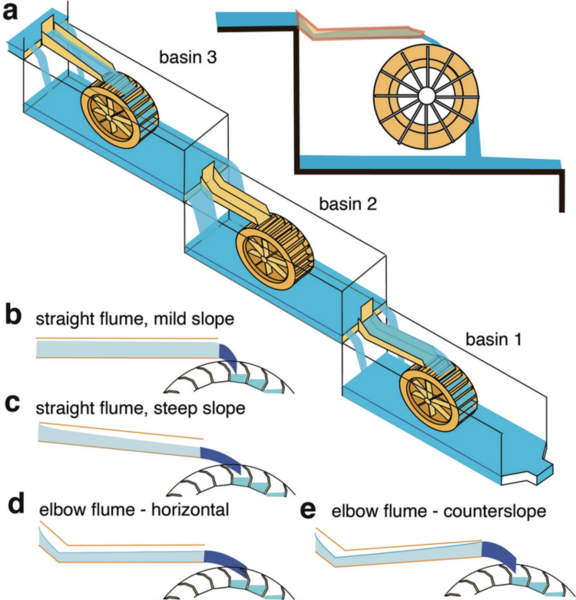The Barbegal watermill complex was a set of sixteen water wheels arranged in two parallel columns of eight along a thirty-meter slope near the French town of Arles. It's been hailed as having the "greatest known concentration of mechanical power in the ancient world." Each wheel was connected to a grinding mechanism, which milled grain into flour, perhaps as much as 25 tonnes per day from the entire complex. When the complex was constructed at the end of the 1st century, the area was part of the Roman Empire. Archaeologists have speculated that Barbegal could have supplied bread to the 27,000 inhabitants of the local town of Arelate. It may also have been used to produce mass quantities of hardtack, a long-lasting, dry, salted biscuit, for sailors at the nearby harbors.
Professor Emeritus Dr. Cees Passchier of Johannes Gutenberg University and his colleagues sought to understand the workings of this impressive industrial watermill. Unfortunately, today it's in ruins and all the wooden machinery has long since decayed.
But clues still remain to the complex's structure in the form of carbonate deposits. Barbegal likely operated for more than 200 years, and over the hours and hours of water flow, thick crusts of this salt mineral built up, preserving a rough, plaster-like outline of the mill's inner machinery. Passchier and his co-authors used these carbonate formations to decipher how the water mill operated.
Their findings, published in the journal Scientific Reports, suggest that the wheels were roughly 1.9 meters (6.2 feet) in diameter and fed by long flumes in an 'overshot' style, in which water flows down over the top of the wheel. Especially key in the design were subtly brilliant "elbow" flumes.
"The lower mills used an elbow shaped flume to bring water onto overshot millwheels. This flume was specially adapted to the small water basins and serial arrangement of the mills on the slope... It was a solution to counter the setbacks of the small volume of the headwater basins and potentially large variations in discharge, ensuring smooth operation of the mills," The researchers explained.

"It is conceivable that simple, elegant solutions for complex technical problems, developed in antiquity and waiting to be discovered, may be applicable to modern and future water systems for sustainability."
Source: Passchier, C.W., Bourgeois, M., Viollet, P. et al. Reconstructing the hydraulics of the world's first industrial complex, the second century CE Barbegal watermills, France. Sci Rep 10, 17917 (2020).





Reader Comments
Tartarian
There ya go
gthoh